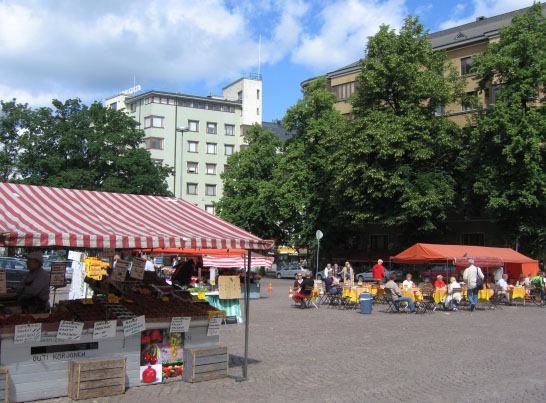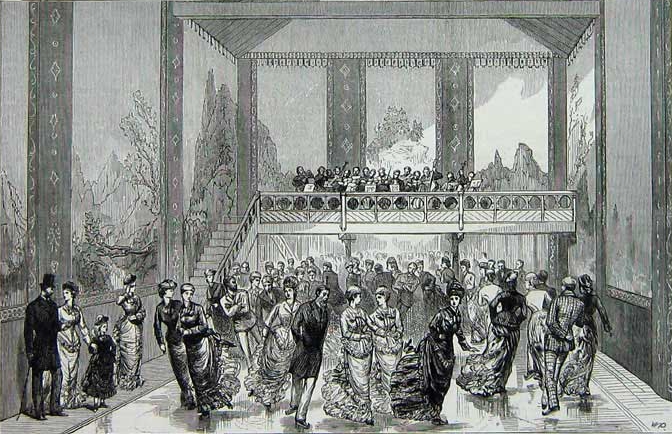|
Töölöntori
Töölöntori ( sv, Tölö torg) is an urban square and marketplace in the Töölö district of central Helsinki, Finland. It is bounded in the west by Runeberginkatu and the southern end of Topeliuksenkatu, in the north by Tykistönkatu; Töölöntorinkatu forms its eastern limit, and Sandelsinkatu its southern. Töölöntori is a local transport node, due to the busy road traffic along Runeberginkatu and Topeliuksenkatu, as well as trams (as of January 2021, routes 1, 2 and 8) traversing it. The planned extension of the Helsinki Metro network also includes a new station at Töölöntori. The square is used for daily (Mon-Sat) open-air markets, as well as occasionally hosting other functions. It is also partly used for car parking. Following a design competition by the City of Helsinki, there are plans to develop the space in a more resident-friendly manner, to include a fountain, new seating areas, a market hall and, in the winter, an ice rink. Much of the Töölöntori and ... [...More Info...] [...Related Items...] OR: [Wikipedia] [Google] [Baidu] |
Runeberginkatu
Runeberginkatu ( sv, Runebergsgatan) is a major street in central Helsinki, Finland. Starting from Kampintori, it runs in a sweeping arc broadly northwards for approximately through the districts of Kamppi and Töölö, via Töölöntori square, terminating at a junction with Mannerheimintie by the Finnish National Opera. The street is named after Johan Ludvig Runeberg, the national poet of Finland. The name first appears in a map from 1892, initially as 'Runebergkatu', and was changed in 1928 to its current format. Sections of the street carry tram traffic (as of January 2021, routes 1, 2 and 8). Major intersections of Runeberginkatu include: *Arkadiankatu *Museokatu *Hesperia Esplanade *Topeliuksenkatu *Mannerheimintie Notable buildings along the street include the Swedish-language Hanken School of Economics, on the corner with Arkadiankatu. The Finnish-language business school, Helsinki School of Economics and Business Administration, was also located nearby, before becom ... [...More Info...] [...Related Items...] OR: [Wikipedia] [Google] [Baidu] |
Töölö
Töölö (; sv, Tölö, formerly spelled ''Thölö'') is the collective name for the neighbourhoods Etu-Töölö ( sv, Främre Tölö, lit=Front Töölö, links=no) and Taka-Töölö ( sv, Bortre Tölö, lit=Rear Töölö, links=no) in Helsinki, Finland. The neighbourhoods are located next to the city centre, occupying the western side of the Helsinki Peninsula. Etu-Töölö, the southern neighbourhood, borders Kamppi and is the location of the Finnish Parliament House. Taka-Töölö, the northern neighbourhood, borders Meilahti and Laakso, and is the location of the Helsinki University Central Hospital. Contrary to popular belief, Töölö is no longer an official name of any district or neighbourhood in Helsinki; in 1959 Töölö was divided into Etu-Töölö and Taka-Töölö. Overview Töölö was built in 1920–1930 when Helsinki suffered from rapid population growth and needed more housing. It was the site of the first ever town planning competition in Finland in 189 ... [...More Info...] [...Related Items...] OR: [Wikipedia] [Google] [Baidu] |
Urban Square
A town square (or square, plaza, public square, city square, urban square, or ''piazza'') is an open public space, commonly found in the heart of a traditional town but not necessarily a true geometric square, used for community gatherings. Related concepts are the civic center, the market square and the village green. Most squares are hardscapes suitable for open markets, concerts, political rallies, and other events that require firm ground. Being centrally located, town squares are usually surrounded by small shops such as bakeries, meat markets, cheese stores, and clothing stores. At their center is often a well, monument, statue or other feature. Those with fountains are sometimes called fountain squares. By country Australia The city centre of Adelaide and the adjacent suburb of North Adelaide, in South Australia, were planned by Colonel William Light in 1837. The city streets were laid out in a grid plan, with the city centre including a central public square, Victo ... [...More Info...] [...Related Items...] OR: [Wikipedia] [Google] [Baidu] |
Marketplace
A marketplace or market place is a location where people regularly gather for the purchase and sale of provisions, livestock, and other goods. In different parts of the world, a marketplace may be described as a '' souk'' (from the Arabic), ''bazaar'' (from the Persian), a fixed '' mercado'' (Spanish), or itinerant ''tianguis'' (Mexico), or ''palengke'' (Philippines). Some markets operate daily and are said to be ''permanent'' markets while others are held once a week or on less frequent specified days such as festival days and are said to be ''periodic markets.'' The form that a market adopts depends on its locality's population, culture, ambient and geographic conditions. The term ''market'' covers many types of trading, as market squares, market halls and food halls, and their different varieties. Thus marketplaces can be both outdoors and indoors, and in the modern world, online marketplaces. Markets have existed for as long as humans have engaged in trade. The earlies ... [...More Info...] [...Related Items...] OR: [Wikipedia] [Google] [Baidu] |
Helsinki
Helsinki ( or ; ; sv, Helsingfors, ) is the Capital city, capital, primate city, primate, and List of cities and towns in Finland, most populous city of Finland. Located on the shore of the Gulf of Finland, it is the seat of the region of Uusimaa in southern Finland, and has a population of . The Helsinki urban area, city's urban area has a population of , making it by far the List of urban areas in Finland by population, most populous urban area in Finland as well as the country's most important center for politics, education, finance, culture, and research; while Tampere in the Pirkanmaa region, located to the north from Helsinki, is the second largest urban area in Finland. Helsinki is located north of Tallinn, Estonia, east of Stockholm, Sweden, and west of Saint Petersburg, Russia. It has History of Helsinki, close historical ties with these three cities. Together with the cities of Espoo, Vantaa, and Kauniainen (and surrounding commuter towns, including the eastern ... [...More Info...] [...Related Items...] OR: [Wikipedia] [Google] [Baidu] |
Helsinki Tram Network
The Helsinki tram network forms part of the Helsinki public transport system organised by Helsinki Regional Transport Authority and operated by Metropolitan Area Transport Ltd (Finnish: Pääkaupunkiseudun Kaupunkiliikenne Oy, Swedish: Huvudstadsregionens Stadstrafik Ab) in the Finnish capital city of Helsinki. The trams are the main means of transport in the city centre. 56.7 million trips were made in 2013. Helsingin kaupungin liikennelaitos The Helsinki system is one of the oldest electrified tram networks in the world. Lines In 2017, approximately of double track was in operation with 11 routes. Additional lines In addition to the 10 regular lines two special ones exist: the museum line operated by Helsinki City Transport in collaboration with Oy Stadin Ratikat Ab Stadin Ratikat and the Spårakoff pub tram, both of which run during the summer months. These lines do not appear in the route map included with this article. * Approximate week day figures in 24-hou ... [...More Info...] [...Related Items...] OR: [Wikipedia] [Google] [Baidu] |
Helsinki Metro
The Helsinki Metro ( fi, Helsingin metro, sv, Helsingfors metro) is a rapid transit system serving Greater Helsinki, Finland. It is the world's northernmost metro system. It was opened to the general public on 2 August 1982 after 27 years of planning. It is operated by Helsinki City Transport for HSL and carries 92.6 million passengers per year. The system consists of 2 lines, serving a total of 30 stations. It has a total length of . It is the predominant rail link between the suburbs of East Helsinki and the western suburbs in the city of Espoo and downtown Helsinki. The line passes under Helsinki Central Station, allowing passengers to transfer to and from the Helsinki commuter rail network, including trains on the Ring Rail Line to Helsinki Airport. History 1955–67: Light rail plan The initial motion for building a metropolitan railway system in Helsinki was made in September 1955, though during the five decades beforehand, the idea of a tunneled urban railway ... [...More Info...] [...Related Items...] OR: [Wikipedia] [Google] [Baidu] |
Ice Rink
An ice rink (or ice skating rink) is a frozen body of water and/or an artificial sheet of ice created using hardened chemicals where people can ice skate or play winter sports. Ice rinks are also used for exhibitions, contests and ice shows. The growth and increasing popularity of ice skating during the 1800s marked a rise in the deliberate construction of ice rinks in numerous areas of the world. The word "rink" is a word of Scottish origin meaning, "course" used to describe the ice surface used in the sport of curling, but was kept in use once the winter team sport of ice hockey became established. There are two types of ice rinks in prevalent use today: natural ice rinks, where freezing occurs from cold ambient temperatures, and artificial ice rinks (or mechanically frozen), where a coolant produces cold temperatures in the surface below the water, causing the water to freeze. There are also synthetic ice rinks where skating surfaces are made out of plastics. Besides rec ... [...More Info...] [...Related Items...] OR: [Wikipedia] [Google] [Baidu] |
Docomomo
Docomomo International (sometimes written as DoCoMoMo or simply Docomomo) is a non-profit organization whose full title is: International Committee for Documentation and Conservation of Buildings, Sites and Neighbourhoods of the Modern Movement. Mrinalini Rajagopalan, author of "Preservation and Modernity: Competing Perspectives, Contested Histories and the Question of Authenticity," described it as "the key body for the preservation of modernist architecture". History Its foundation was inspired by the work of ICOMOS, the International Council on Monuments and Sites, established in 1965. The work of Icomos was concerned with the protection and conservation of historical buildings and sites, whereas Docomomo was founded to take up the challenge of the protection and conservation of Modern Architecture and Urbanism. Docomomo International was founded in Eindhoven in 1988 by Dutch architects Hubert-Jan Henket and Wessel de Jonge. Henket chaired Docomomo International with de Jon ... [...More Info...] [...Related Items...] OR: [Wikipedia] [Google] [Baidu] |
Finnish Heritage Agency
The Finnish Heritage Agency ( fi, Museovirasto, sv, Museiverket), previously known in English as the National Board of Antiquities, preserves Finland's material cultural heritage: collects, studies and distributes knowledge of it. The agency is a cultural and research institution, but it is also a government authority charged with the protection of archaeological sites, built heritage, cultural-historically valuable environments and cultural property, in collaboration with other officials and museums. The Agency offers a wide range and diversified range of services, a professional staff of specialists, the exhibitions and collections of its several museums, extensive archives, and a specialized scientific library, all of which are at the disposal of the general public. The Finnish Heritage Agency is attached to the Ministry of Education An education ministry is a national or subnational government agency politically responsible for education. Various other names are commonly use ... [...More Info...] [...Related Items...] OR: [Wikipedia] [Google] [Baidu] |







